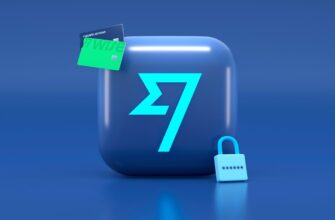- Why Backing Up Accounts with Passwords Is Non-Negotiable
- Core Methods for Backing Up Accounts Securely
- Step-by-Step: How to Backup Account with Password
- Using a Password Manager (Recommended)
- Manual Browser Export
- Best Practices for Ironclad Backup Security
- FAQ: Your Backup Questions Answered
- Final Thoughts
Why Backing Up Accounts with Passwords Is Non-Negotiable
Losing access to critical accounts—email, banking, or cloud storage—can be catastrophic. A 2023 IBM report revealed that 83% of data breaches involved stolen credentials. Backing up accounts with passwords isn’t just about convenience; it’s a security imperative. This guide demystifies how to backup account with password systems effectively, ensuring you never face irreversible data loss or lockouts.
Core Methods for Backing Up Accounts Securely
Choose the right approach based on your technical comfort and account types:
- Password Manager Export: Tools like Bitwarden or 1Password let you export encrypted vaults containing all logins.
- Manual CSV Export: Export account lists (username/password) from browsers or services like Google Accounts.
- Encrypted Cloud Sync: Use VeraCrypt to create encrypted containers storing backup files on Dropbox or OneDrive.
- Physical Storage: Save password-protected USB drives or external HDDs in fireproof safes.
Step-by-Step: How to Backup Account with Password
Using a Password Manager (Recommended)
- Install a trusted manager (e.g., KeePassXC).
- Import all account credentials into its vault.
- Export data as an encrypted .kdbx file.
- Set a strong master password (12+ characters, symbols, numbers).
- Store the file in 2+ locations (e.g., cloud + external drive).
Manual Browser Export
- In Chrome: Settings > Autofill > Passwords > Export.
- Protect the CSV with encryption software before storing.
- Warning: CSVs are unencrypted—never store them raw.
Best Practices for Ironclad Backup Security
- Encrypt Everything: Use AES-256 encryption for all backup files.
- Multi-Location Rule: Keep copies offline (USB) AND online (encrypted cloud).
- Update Quarterly: Refresh backups after password changes or new accounts.
- Test Restores: Validate backups by importing them annually.
- Zero Trust: Never email backups or store them on shared devices.
FAQ: Your Backup Questions Answered
Q: Is backing up passwords legally risky?
A: Legally permissible for personal use. For businesses, comply with regulations like GDPR—encrypt and restrict access.
Q: Can hackers access my exported password files?
A: Only if unencrypted or weakly protected. AES-256 encryption makes files virtually uncrackable.
Q: How often should I backup accounts?
A: After any credential change or new account creation. Schedule quarterly reviews.
Q: Are password managers safer than manual backups?
A: Yes—they automate encryption and reduce human error. Opt for open-source, audited tools like Bitwarden.
Q: What if I forget my backup file’s password?
A: Use a password reset phrase stored separately (e.g., bank vault). Recovery is impossible without it.
Final Thoughts
Mastering how to backup account with password protocols shields you from data disasters. Start today: export your password manager vault, encrypt it, and store duplicates offline. In our breach-prone digital world, a 10-minute backup could save years of recovery efforts. Remember—security isn’t optional; it’s your data’s lifeline.








